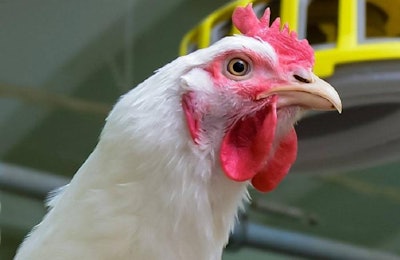
A recent op-ed piece published in the New York Times is below the standards of that organization, and its author, and does a disservice to its readers and the industry it criticizes by publishing falsehoods and misleading statements.
On February 6, 2021, The New York Times printed an op-ed article bashing animal agriculture by its long-time columnist Nicholas Kristof. It targeted Costco Wholesale Corp. specifically and the integrated poultry industry broadly. It is actually his fourth piece targeting the chicken industry in the past decade. He’s penned previous entries titled: “To Kill a Chicken,” “Arsenic in Our Chicken” and “Abusing Chickens We Eat.”
As the editor of a magazine that covers the integrated poultry industry, I consider this opinion article beneath the well-respected, two-time Pulitzer Prize winner. It appears his main source, besides his personal bias against the industry, is the radical animal activist group Mercy for Animals and its president, Leah Garcés.
The main thrust of the article is that chickens grow too fast compared with the past and they are raised on their own litter, which he and Garcés consider to be inhumane.
Kristof did at least reach out to Costco, who did right by the industry and its business by saying what the so-called undercover video claims to expose is nothing out of the ordinary for the industry.
The industry responds
For its part, the Washington-based industry group the National Chicken Council (NCC) wrote to the New York Times saying “farmers and chicken companies take pride in the care of our birds.”
“The conditions described in the article are not an accurate representation of the health and welfare of today’s broiler chickens,” NCC President Mike Brown wrote. “The claim that the efficiencies gained have had negative impacts on the welfare of chickens is not supported by the data, and the fact is that our national flock is as healthy as it has ever been.”
Kristof hits on a few areas where he is wrong or misinformed.
He claims that chickens are bred to suffer
This is false, as the breeding industry and the integrated broiler industry makes the welfare of its animals one of its highest priorities. From a business standpoint, a sick animal cannot breed and cannot produce quality meat. In WATT PoultryUSA, while covering animal welfare issues, I’ve heard the top breeding companies in the world say the welfare of the animal, from the breeders to the bird in the field is, paramount to the sustainability of their operations and the industry itself.
He specifically speaks to leg issues. A key study in animal welfare, published just last year, said the industry is already making major strides in resolving that problem.
Secondly, two of the largest integrated poultry companies in the United States: Tyson Foods Inc. and Perdue Foods are taking active steps to establish outcome-based animal welfare practices, advance the science of animal welfare and to make raising, transporting and slaughtering the birds more humane.
He claims chickens carry ammonia burns
This is a live production and animal husbandry issue the industry has focused on for years both in an academic and practical setting. In the short time I’ve been covering this industry, there’s been a constant focus on how to improve management of litter to keep ammonia levels down to protect the bird – and the workers inside the poultry house – and to keep birds moving.
He claims some chickens are boiled alive
This is a rare occurrence related to the traditional method of slaughter – electrical stunning and throat cutting – where some birds are not insensible or dead before hitting the scalder in the processing line. Integrated poultry companies employ people who serve as backups to the automated systems that stun the bird and cut the neck and ensure that all birds are dead before entering the scalder.
There are also poultry processors in the U.S. that employ alternative stunning methods, such as controlled atmosphere stunning (CAS), which leave the bird irreversibly stunned and insensible before slaughter. I’ve visited Lincoln Premium Poultry’s plant in Fremont, Nebraska, which supplies Costco, and seen its CAS unit in action.
Telling the true story
Brown is correct in noting that opinion articles like Kristof's are an unfortunate symptom of a general lack of knowledge of how chicken winds up on the plate.
“We know it’s on us as an industry to do a better job of providing more information about how our food gets from farm to table,” Brown wrote. “Which is why the National Chicken Council launched Chicken Check In, inviting consumers to take a transparent look at the work the industry is doing to provide safe, healthy and sustainable food.”
Let this misinformed New York Times column serve as a reminder that the poultry industry must always be willing to share what it does and why. Otherwise, the industry's critics will set the agenda against it.

















